When it comes to authentic Filipino Chicken Afritada, my Tita Beth's recipe stands as a testament to how this classic tomato-based stew should be prepared.
Unlike many modern versions that rely on pre-made sauces, this recipe honors the traditional method of using fresh, vine-ripened tomatoes to create a naturally sweet and vibrant sauce. I've spent years perfecting her technique, learning how each step - from properly browning the chicken to timing the addition of vegetables - contributes to creating that perfect balance of flavors that makes this dish a beloved Filipino comfort food.
This time-tested Pinoy recipe transforms humble ingredients into a remarkable stew that's elegant enough for special occasions yet simple enough for family dinners, proving why Chicken Afritada remains a cherished staple in Filipino households across generations.
Jump to:
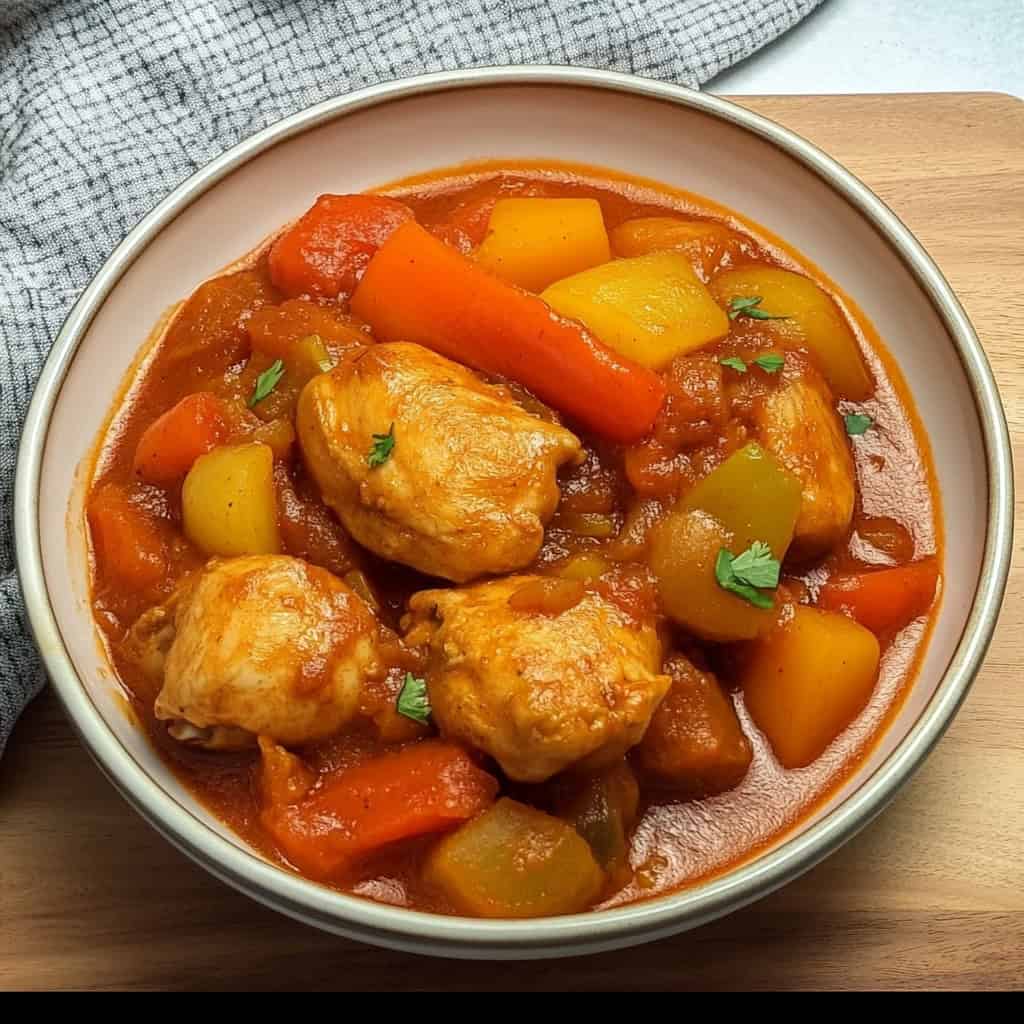
Why You'll Love This Recipe
- Authentic Flavor: Using fresh vine-ripened tomatoes creates a naturally sweet sauce without artificial ingredients
- Perfect Texture: Our two-stage cooking method ensures tender chicken and perfectly cooked vegetables
- Family-Friendly: A complete one-pot meal that both kids and adults will enjoy
- Make-Ahead Friendly: Tastes even better the next day
- Budget-Conscious: Uses simple, accessible ingredients to create a restaurant-quality dish
Ingredients
This recipe brings together the classic Filipino flavor combination that defines authentic afritada. Fresh Roma tomatoes provide natural sweetness and acidity, while fish sauce adds umami depth.
The specific vegetables aren't random - potatoes add heartiness, carrots provide sweetness, bell peppers contribute color and mild flavor, and green peas add bright pops of texture. The whole chicken cut into pieces ensures you get the perfect mix of white and dark meat, creating a more complex and satisfying stew.
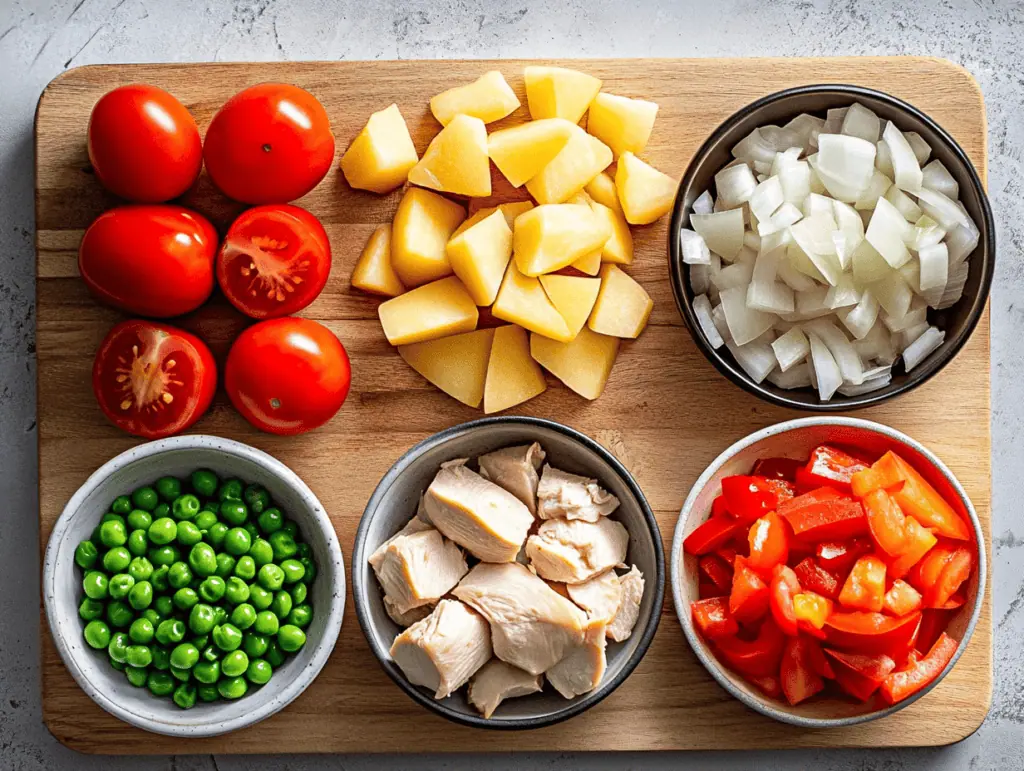
For the Chicken and Sauce:
- 1 whole chicken (about 3 pounds), cut into serving pieces
- 6 large Roma tomatoes
- 1 small onion, peeled and sliced thinly
- 3 cloves garlic, minced
- 1 tablespoon fish sauce
- 2 cups water or chicken broth
- Salt and pepper to taste
- ¼ cup cooking oil
Vegetables:
- 2 medium potatoes, peeled and quartered
- 1 large carrot, cut into chunks
- 1 red bell pepper, sliced
- 1 green bell pepper, sliced
- ½ cup frozen green peas, thawed
Equipment
- Large heavy-bottomed pot - Provides even heat distribution for properly browning ingredients and simmering the stew
- Sharp chef's knife - For efficiently cutting vegetables and chicken into uniform pieces
- Wooden spoon - Perfect for gently mashing tomatoes without damaging your cookware
- Tongs - Makes handling and turning chicken pieces easier during the browning process
- Cutting board - Preferably separate ones for meat and vegetables to prevent cross-contamination
- Measuring cups and spoons - For accurate ingredient proportions
- Vegetable peeler - To efficiently peel potatoes and carrots
- Mixing bowls - For holding prepped ingredients
- Kitchen timer - Helps ensure you don't overcook the vegetables
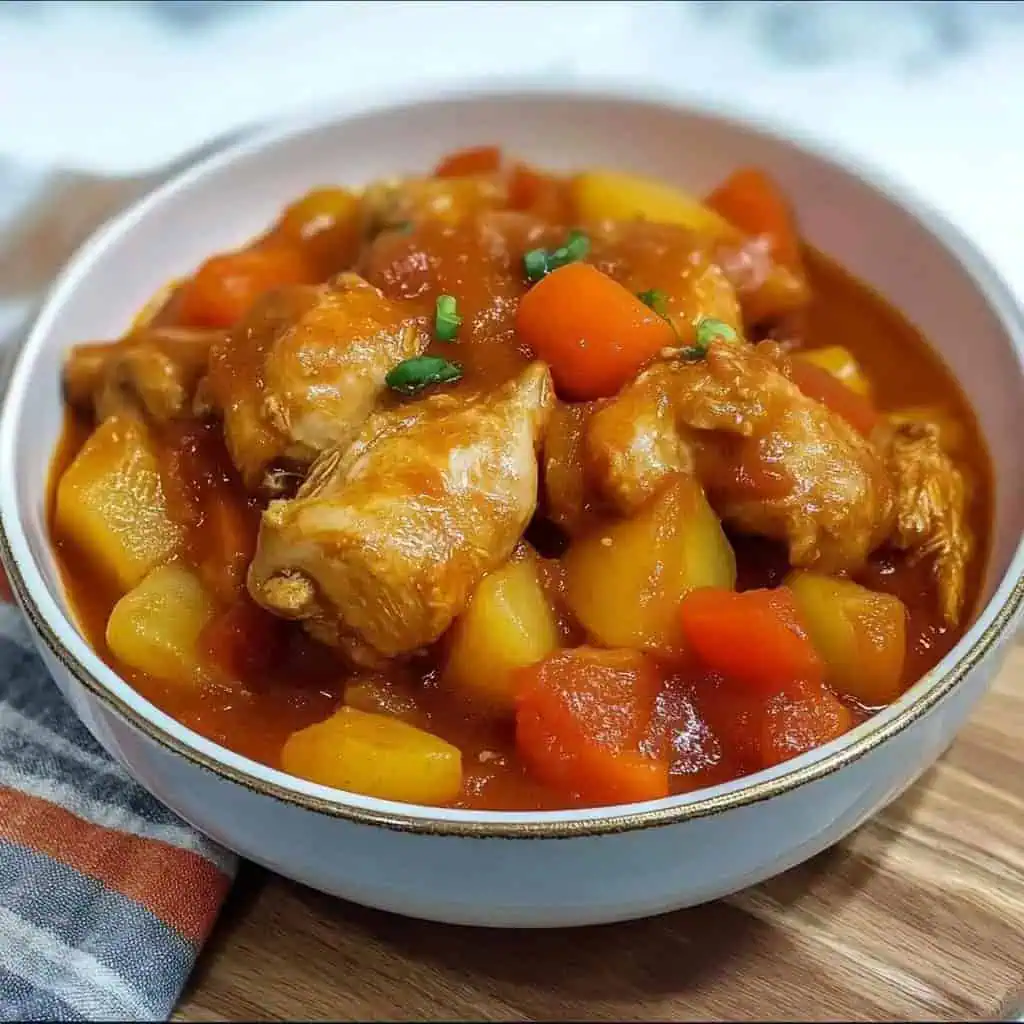
How To Make
- Begin by preparing all vegetables: peel and cut potatoes into uniform 1.5-inch chunks, cut carrots into similar-sized pieces, slice bell peppers into ½-inch strips, and thaw the green peas if frozen.
- Heat oil in a large heavy-bottomed pot over medium-high heat (around 375°F/190°C). Brown the potatoes and carrots until golden (5-7 minutes), then remove and set aside. Quickly sauté bell peppers for 15-20 seconds until slightly blistered, then remove and set aside.
- In the same pot over medium heat (350°F/175°C), sauté sliced onions until translucent, about 2-3 minutes. Add minced garlic and cook until fragrant, about 30 seconds. Add chicken pieces and brown on all sides for 5-7 minutes.
- Add the Roma tomatoes and cook until they soften, about 5-7 minutes. Gently mash them with a wooden spoon to release their juices. Add fish sauce and let it simmer briefly. Pour in water or chicken broth, bring to a boil, then reduce heat to low (around 200°F/95°C). Cover and simmer for 20-25 minutes or until chicken is tender.
- Return the potatoes and carrots to the pot and cook until tender, about 10-12 minutes. Add the bell peppers and green peas during the last 5 minutes of cooking. Season with salt and pepper to taste. The sauce should be rich and slightly thickened.
- Serve hot with steamed white rice. For best results, let it rest for 5-10 minutes before serving to allow flavors to meld together.

Tips from Lola's Kitchen
- Use native chicken when possible for more intense flavor and better texture
- Brown your chicken properly - Take your time with this step as it develops the foundation of flavor
- Don't rush the tomatoes - Allow them to fully break down and release their natural sweetness
- Add vegetables in stages to ensure each maintains its ideal texture
- Let the stew rest for 10-15 minutes after cooking to allow flavors to fully develop
- Use ripe tomatoes for natural sweetness - the redder and riper, the better
- Try adding a bay leaf for additional depth of aroma
- Season in layers - Add a pinch of salt at each cooking stage rather than all at the end
Substitutions
- Chicken: Boneless chicken thighs work well for easier eating, or substitute pork shoulder or beef chuck for variation
- Roma tomatoes: 2 cups canned crushed tomatoes (no salt added) plus 1 tablespoon tomato paste
- Fish sauce: 1 tablespoon soy sauce plus a pinch of salt
- Bell peppers: Any color bell pepper works, or substitute local sweet peppers
- Fresh peas: Canned or frozen peas work perfectly
- Chicken broth: Vegetable broth or water with 1 chicken bouillon cube
- Potatoes: Sweet potatoes or turnips can add interesting flavor variations
- Fresh garlic: 1 teaspoon garlic powder (though fresh is strongly preferred)
Troubleshooting
Watery Sauce
- Simmer uncovered for the last 10-15 minutes to reduce liquid
- Add 1 tablespoon tomato paste to thicken
- Mash a few potato pieces and stir them back into the sauce to act as a natural thickener
Tough Chicken
- Extend cooking time by 10-15 minutes at low heat
- Make sure you're simmering (gentle bubbles) not boiling (rapid bubbles)
- Consider the chicken type - older chickens need longer cooking times
- Cut chicken into smaller pieces next time for faster cooking
Mushy Vegetables
- Add vegetables in stages according to their cooking times
- Use firmer, less ripe vegetables
- Make sure oil is hot enough when pre-browning potatoes and carrots
- Don't overcook bell peppers and peas - add them only in the final minutes
Bland Flavor
- Increase fish sauce by 1-2 teaspoons
- Add more freshly ground black pepper
- Ensure tomatoes are fully ripe and flavorful
- Try adding 1 chicken bouillon cube for depth
Storage & Reheating
Refrigeration
- Store in an airtight container for up to 4 days
- Flavors will continue to develop overnight, making it even more delicious the next day
Freezing
- Freeze for up to 3 months (vegetables may soften when thawed)
- For best results, freeze the chicken and sauce separately from the vegetables
- Cool completely before freezing to prevent ice crystals
Reheating
- Stovetop: Reheat gently over medium-low heat, stirring occasionally
- Microwave: Use 70% power in 1-minute intervals, stirring between
- Add 2-3 tablespoons of water or broth if sauce has thickened too much
- Sprinkle with fresh herbs after reheating to brighten flavors
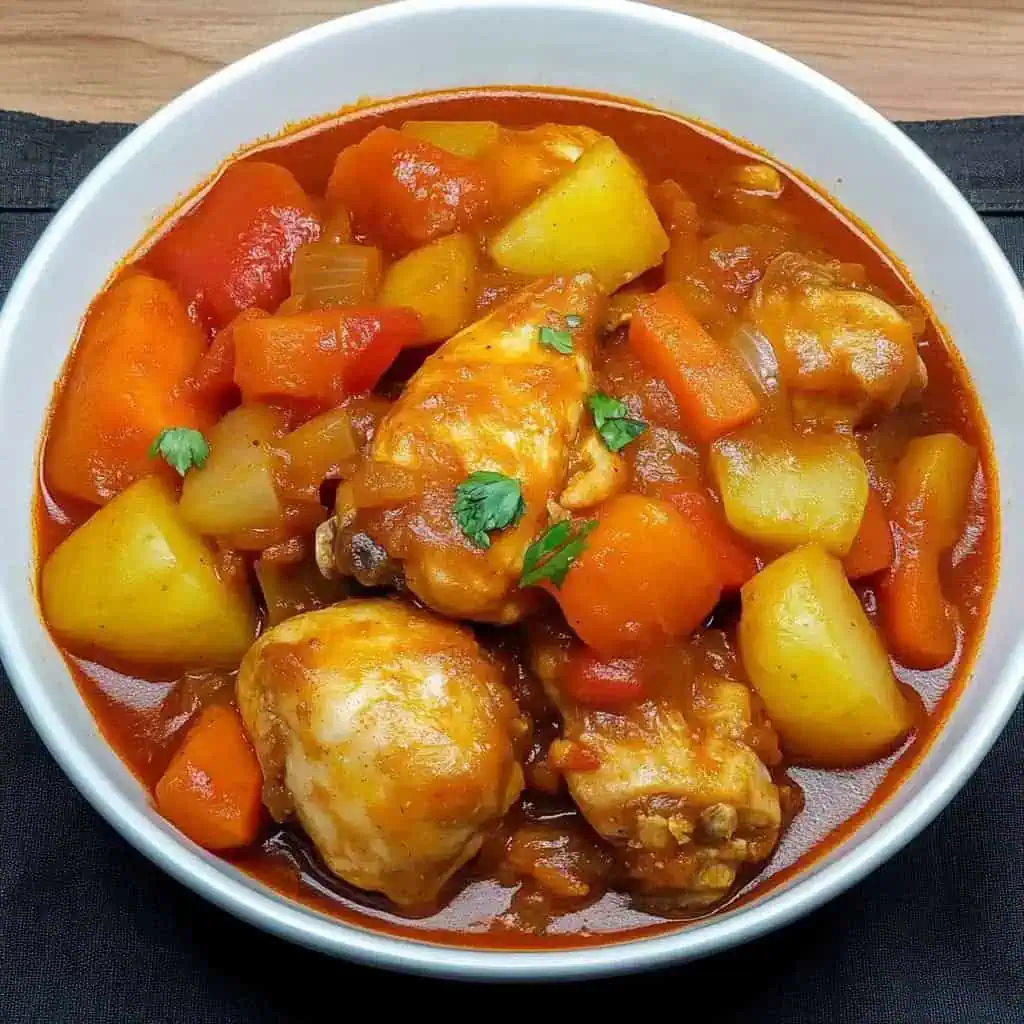
FAQ
What makes Afritada different from Mechado or Caldereta?
Afritada uses a simple tomato base with bell peppers and no liver spread. Mechado incorporates soy sauce and citrus, while Caldereta features liver spread and sometimes cheese for a richer sauce.
Can I use chicken breast only?
Yes, but reduce cooking time to 15-18 minutes to prevent drying. Bone-in, skin-on thighs and drumsticks provide the best flavor and moisture.
Why brown the vegetables separately?
This step caramelizes their outside for better flavor while preventing them from becoming mushy during the long simmer with the chicken.
How can I make it healthier?
Use skinless chicken pieces, increase the vegetables, use olive oil instead of vegetable oil, and reduce the amount to 2 tablespoons.
Can I make this in a slow cooker?
Yes, brown the chicken and vegetables first, then transfer to a slow cooker with all other ingredients. Cook on low for 6-7 hours or high for 3-4 hours.
What's the best way to cut a whole chicken?
Ask your butcher to cut it for you, or use kitchen shears to cut along each side of the backbone, then cut each breast, thigh, and leg into pieces.
Is this recipe spicy?
Traditional Afritada is not spicy. For heat, add 1-2 chopped bird's eye chilies or 1 teaspoon red pepper flakes.
Can I add other vegetables?
Absolutely! Green beans, corn, or mushrooms make excellent additions. Add them based on their cooking times.
Related
Looking for other recipes like this? Try these:

Classic Filipino Chicken Afritada (Afritadang Manok)
Equipment
- Large heavy-bottomed pot
- Sharp knife for vegetables
- Wooden spoon for mashing tomatoes
- Tongs for handling chicken
Ingredients
For the Chicken and Sauce
- 1 whole chicken about 3 pounds, cut into serving pieces (3 librang manok, hiniwa-hiwa)
- 6 large Roma tomatoes kamatis
- 1 small onion peeled and sliced thinly (maliit na sibuyas)
- 3 cloves garlic minced (butil ng bawang, dinurog)
- 1 tablespoon fish sauce patis
- 2 cup water or chicken broth tubig o sabaw ng manok
- Salt and pepper to taste asin at paminta
- ¼ cup cooking oil mantika
Vegetables
- 2 medium potatoes peeled and quartered (patatas)
- 1 large carrot cut into chunks (karot)
- 1 red bell pepper sliced (pulang bell pepper)
- 1 green bell pepper sliced (berdeng bell pepper)
- ½ cup frozen green peas thawed (gisantes)
Instructions
- Begin by preparing all vegetables: peel and cut potatoes (patatas) into uniform 1.5-inch chunks, cut carrots into similar-sized pieces, slice bell peppers (bell pepper) into ½-inch strips, and thaw the green peas (gisantes) if frozen.
- Heat oil (mantika) in a large heavy-bottomed pot over medium-high heat (around 375°F/190°C). Brown the potatoes and carrots until golden (5-7 minutes), then remove and set aside. Quickly sauté bell peppers for 15-20 seconds until slightly blistered, then remove and set aside.
- In the same pot over medium heat (350°F/175°C), sauté sliced onions (sibuyas) until translucent, about 2-3 minutes. Add minced garlic (dinurog na bawang) and cook until fragrant, about 30 seconds. Add chicken pieces (hiniwa-hiwang manok) and brown on all sides for 5-7 minutes.
- Add the Roma tomatoes (kamatis) and cook until they soften, about 5-7 minutes. Gently mash them with a wooden spoon to release their juices. Add fish sauce (patis) and let it simmer briefly. Pour in water or chicken broth (sabaw ng manok), bring to a boil, then reduce heat to low (around 200°F/95°C). Cover and simmer for 20-25 minutes or until chicken is tender.
- Return the potatoes and carrots to the pot and cook until tender, about 10-12 minutes. Add the bell peppers and green peas during the last 5 minutes of cooking. Season with salt and pepper (asin at paminta) to taste. The sauce should be rich and slightly thickened.
- Serve hot with steamed white rice (mainit na kanin). For best results, let it rest for 5-10 minutes before serving to allow flavors to meld together.
Tips from Lola's Kitchen
- Choose native chicken (native na manok) for more flavorful results
- Marinate chicken in calamansi and pepper for 30 minutes before cooking
- Add a bay leaf (dahon ng laurel) for extra aroma
- Pan-fry potatoes separately to prevent them from falling apart
- Use ripe tomatoes for natural sweetness
Nutrition
The Story Behind Filipino Chicken Afritada
Growing up in a Filipino household, the aroma of Chicken Afritada (Afritadang Manok) wafting through our kitchen always signaled a special family gathering. This beloved Filipino chicken stew, with its rich tomato-based sauce and colorful vegetables, tells the story of our country's diverse culinary heritage, particularly the Spanish influence that has shaped our cuisine for centuries.
The word "afritada" comes from the Spanish "fritada," meaning "fried," referring to the crucial first step of browning the chicken and vegetables to develop deep, complex flavors. While similar to other Filipino tomato-based stews like mechado and caldereta, afritada stands apart with its signature combination of potatoes, carrots, and bell peppers, creating a harmony of colors that's as appealing to the eyes as it is to the palate.
In the bustling streets of Manila's oldest districts, particularly in Binondo and Quiapo, you'll find heritage restaurants serving their versions of afritada, each claiming to have the most authentic recipe passed down through generations. Some families add their special touch with green olives or mushrooms, while others swear by using native chicken (pinaupong manok) for its superior flavor and texture.
Traditional Filipino home cooks understand that the secret to exceptional afritada lies in two key elements: the quality of tomatoes and the patience to let the flavors develop slowly. Unlike modern adaptations that rely on canned sauce, this recipe honors the old-world technique of using fresh, ripe tomatoes, allowing their natural sweetness and acidity to create a more nuanced and balanced sauce that gently coats each ingredient.
Today, chicken afritada remains a staple at Filipino family gatherings, from simple Sunday lunches to grand fiestas. It's one of those dishes that tastes even better the next day, as the flavors continue to meld and deepen. Whether served in humble karitons (street food carts) or presented at elaborate parties, afritada represents the Filipino tradition of bringing people together through food that's made with time, care, and love.
In many Filipino-American households, this dish serves as a bridge between generations, with modern cooks adapting their lola's (grandmother's) recipes while maintaining the essence of what makes afritada special. Some add a twist with additional herbs or adjust the cooking method for busy schedules, but the heart of the dish – tender chicken and vegetables in that signature sauce – remains unchanged, continuing to tell our story of family, tradition, and the enduring influence of Spanish-Filipino cuisine.
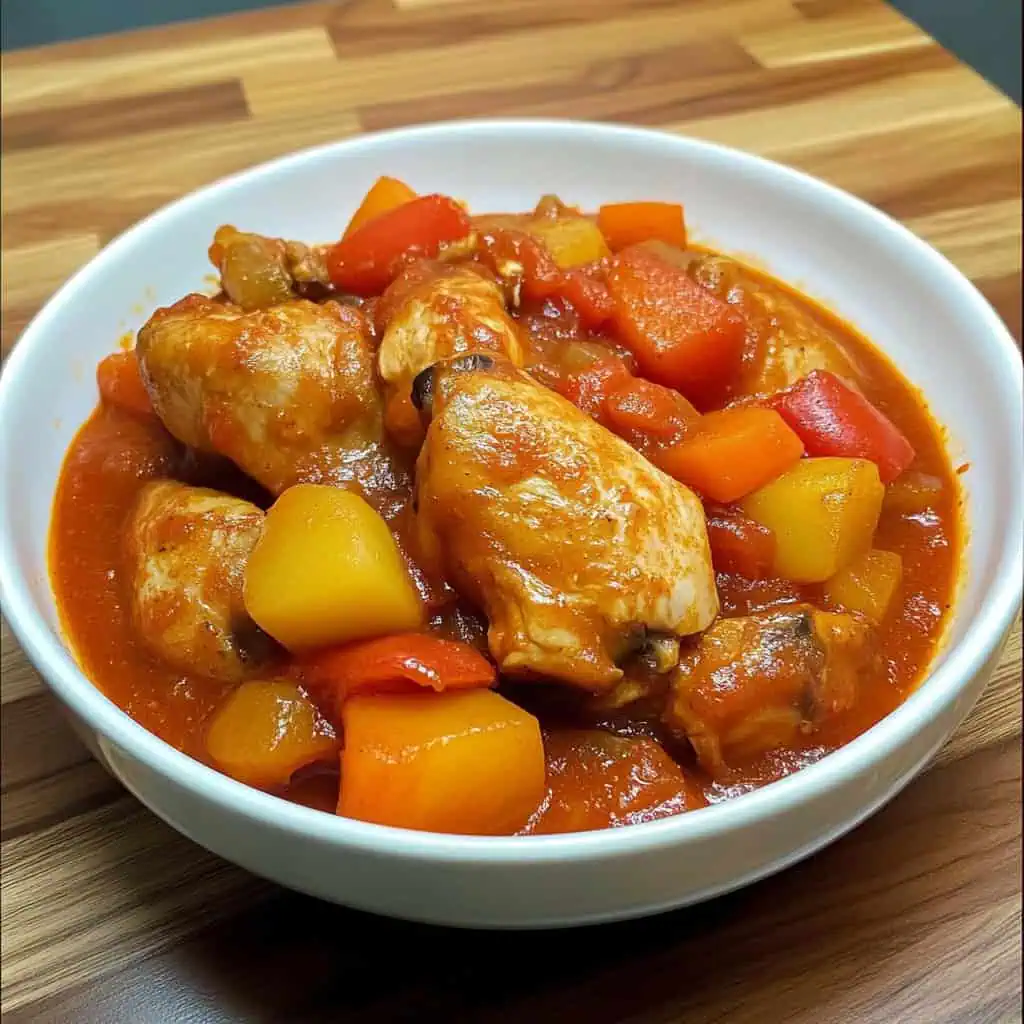






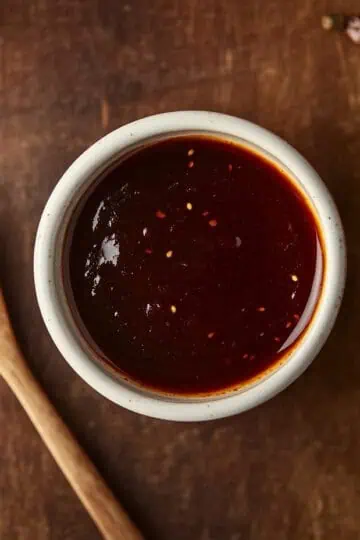
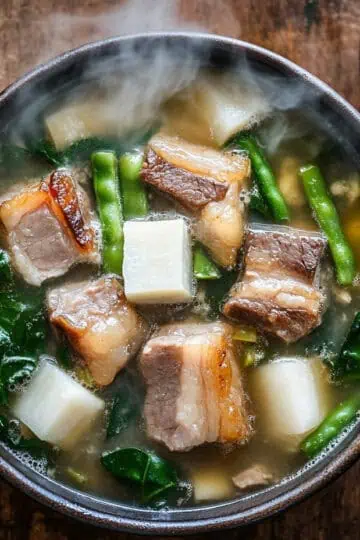
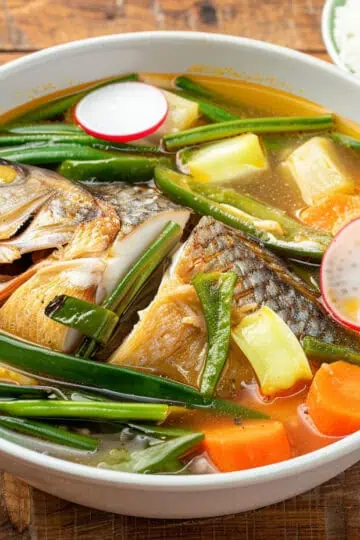
Comments
No Comments